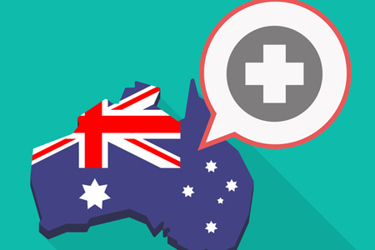How An Australia-First Strategy Cut 63% From Our R&D Spend
By Russell Hayward, CEO, Etira

If you ask any seed-stage biotech CFO what keeps them up at night, the answer is almost always the same: the burn rate. In mid-2021, shortly after we incorporated Etira, the fundraising market for oncology startups was showing signs of tightening (little did we know then how dramatic that tightening would become). We decided to maximize our seed capital and stretch it as far as we could, while moving fast to bring our lead compound into clinical trials to protect our patent horizon. After mapping every feasible geography, we landed on Australia’s Research and Development Tax Incentive (R&DTI) program. That decision slashed our R&D spend by about 63% and let us progress faster than would have been possible in the United States.
The Three-Part Equation Behind A 63% Cost Reduction
The cost savings came to fruition thanks to three distinct factors:
- Currency tailwind (~35%) – All vendor contracts are denominated in Australian dollars (AUD). Over the past four years, the AUD/USD exchange rate has hovered around 0.65, giving us an immediate discount each time we wire funds from Dallas.
- Yearly 43.5% R&D rebate – At the end of each financial year, our accountants file a claim with the Australian Taxation Office; within roughly 90 days, the treasury wires back 43.5% of every eligible dollar we spent. We treat that payment as a predictable, government-funded bridge round.
- Ethics and regulatory efficiency – Australia’s process is more streamlined than a U.S. IND application, while equally stringent on safety. From the ethics submission to the approval usually takes about six weeks, including one Q&A cycle. Nationwide contract templates cut additional time from site start-up.
Combined, these levers dropped our modeled Phase 1 budget from just over $4 million to roughly $1.5 million — buying us an extra year of scientific runway.
Building An Australia-First Engine
We began at an inner-city Sydney cancer center and, earlier this month, opened a third site in northwest Sydney to broaden the catchment area. Investigators there have deep first-in-human expertise and on-site Phase 1 pharmacology units, so patients never leave the building for imaging or labs — a small detail that accelerates database lock.
A Sydney-based CRO streams real-time data into an eTMF that mirrors FDA templates. Our regulatory consultant — an Australian Ph.D. now based in Portland — keeps every protocol amendment aligned with both Australia’s Therapeutic Goods Administration (TGA) guidance and future FDA expectations. Currency-denominated invoices feed a rebate-forecast worksheet that finance reviews each month.
This operational simplicity matters because ERX-315, our endoplasmic-reticulum-stress inducer, is first-in-class. Investigators need confidence that a lean sponsor can deliver Big Pharma rigor. Each quarter, they review the same safety listings the FDA will eventually see, plus narrated 3-minute explainer videos patients can watch before deciding whether to proceed. Those clips translate ER-stress biology into everyday language and — based on CRO feedback — make the consent conversation faster and less intimidating.
Bench-To-Bedside Progress: Cautious Optimism At Dose Level 4
In June 2025, we treated the first participant at dose level 4 (DL4) after an independent safety committee confirmed zero dose-limiting toxicities (DLTs) across the initial three cohorts. No DLTs have emerged at DL4 either — an uncommon finding for a first-in-class anticancer agent — and we are beginning to see preliminary signs of antitumor activity. The combination of early efficacy signals and a clean safety profile underpins our optimism as the study advances.
5 Lessons U.S. Sponsors Can Apply Tomorrow
For pharma companies looking outside the U.S. for its clinical trials, consider the following tips.
- Hire clinical trial notification expertise on day one. A local consultant collapsed our ethics/TGA timeline from a theoretical 12 weeks to six and translated every nuance for FDA eyes. They will also be able to determine the feasibility of your study in Australia.
- Parallel-track chemistry, manufacturing, and controls (CMC) import permits. Starting permits alongside protocol authoring saved four to six weeks that would have idled drug supply and site activation.
- Treat the incentive like a yearly bridging round. As data mature and valuation rises, the rebate augments next year’s budget without diluting the cap table.
- Mirror FDA-ready data assets from the start. Identical case-report forms (CRFs) and an eTMF mapped to Module 5 make IND bridging almost plug-and-play.
- Engage your Australian R&DTI consultant before any work begins. Early engagement prevents paperwork gaps that can delay— or reduce— the rebate.
What’s Next
Barring any DLTs at DL4, we plan to file an FDA pre-IND briefing packet this fall and bridge the Australian data into a U.S. multicenter expansion in early 2026. An updated safety-and-efficacy data set will also be submitted to the European Society for Medical Oncology (ESMO) 2025 Congress. Our experience shows that global trial design is no longer Big Pharma’s exclusive domain. Capital-conscious startups can capture the same blend of speed, savings, and scientific rigor by looking beyond their own backyard.
About The Author:
 Russell Hayward is CEO of Etira, a clinical-stage biopharmaceutical company headquartered in Dallas and committed to developing multiple effective drug therapies for patients with therapy-resistant cancers. Russell is an experienced business leader with specialized expertise in launching and growing successful companies in both Australia and the U.S. By applying proven financial and organizational skills to the biotech field, Russell is fast-tracking Etira’s breakthrough scientific discovery from IND-enabling studies through clinical trials.
Russell Hayward is CEO of Etira, a clinical-stage biopharmaceutical company headquartered in Dallas and committed to developing multiple effective drug therapies for patients with therapy-resistant cancers. Russell is an experienced business leader with specialized expertise in launching and growing successful companies in both Australia and the U.S. By applying proven financial and organizational skills to the biotech field, Russell is fast-tracking Etira’s breakthrough scientific discovery from IND-enabling studies through clinical trials.
